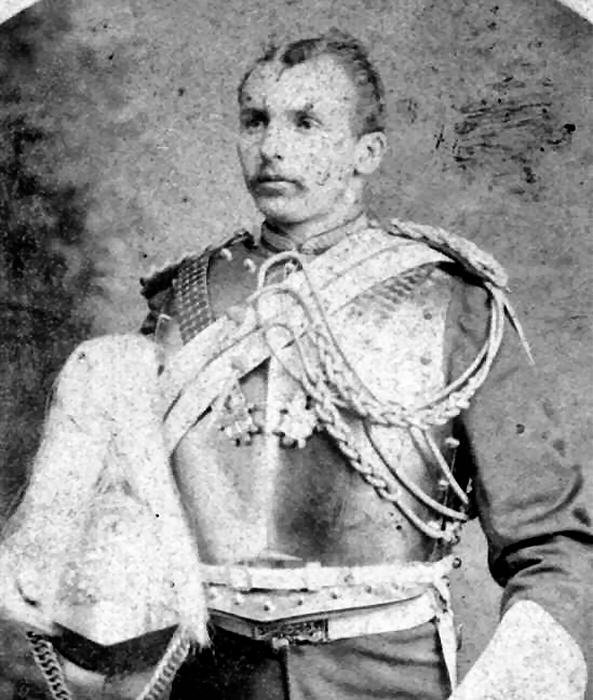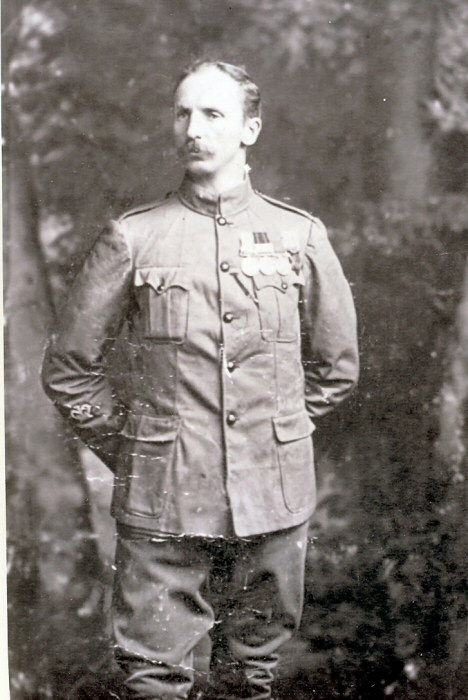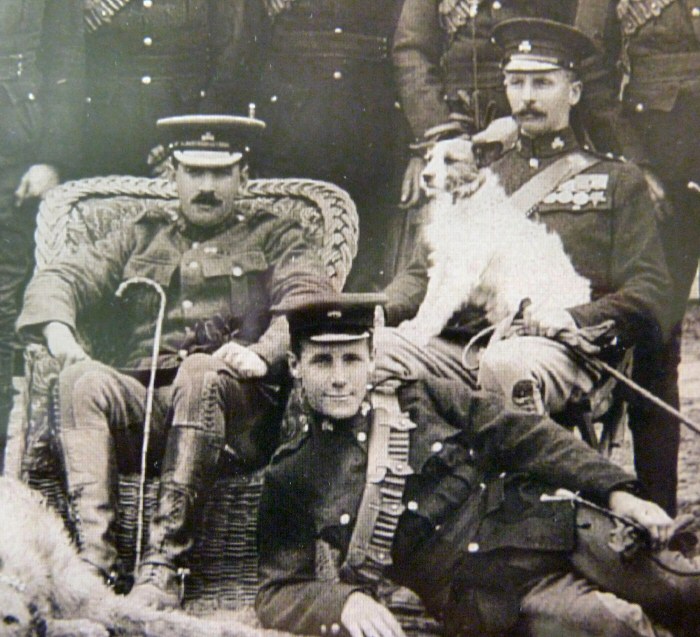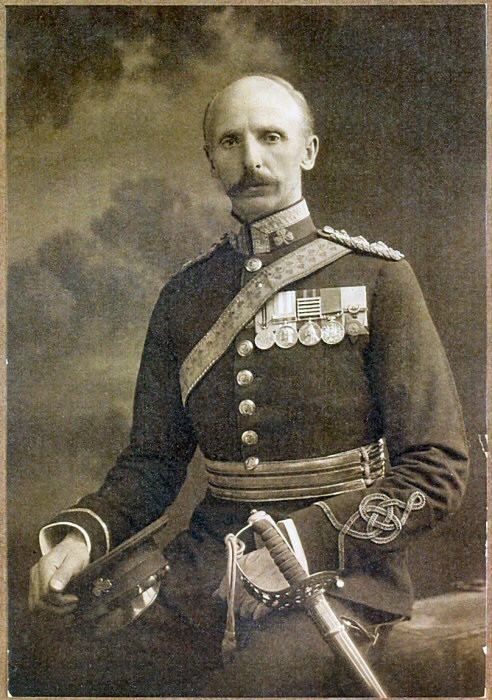|
James William BAYLISS 1858 – 1926
|
|
Most of that written below was compiled in 2002 a year or two into my research of the SIY / SIH. James Bayliss had a full and varied life in keeping with the times into which he was born and lived. The following notes have been gathered from several sources each one given at the end of the article. From his records I discovered he was born within the parish of Enstone in the county of Oxfordshire England. This then became the starting point for my research into his family background. In the 1861 census of England the Parish of Enstone is covered on only thirty or so pages, within this area are four BAYLIS (note the single S) families. William Baylis aged 36 and his wife Charlotte aged 29 are noted with four children, Sarah aged 8 Jane aged 6 James W aged 3 and Elizabeth aged 1. His parents William Baylis and Charlotte Boots daughter of David Boots, were married in Lyneham Church parish of Shipton Under Wychwood, Oxfordshire on 16th September 1850. |
 |
.
In the parish of Enstone I found only one burial relating to his family, this for William George Bayliss, his son, who died in 1969 in Sussex and was buried in the same year in Chipping Norton municipal graveyard, an adjacent parish. The grave is in fact that of James William Bayliss, his son arriving after his death in 1969. J W Bayliss joined the army in Brighton on 27th January 1876, he was aged 18 years and 9 months and gave his occupation as bricklayer. He had previously applied to join the Royal Marines and had been turned down on medical grounds. He was accepted into the 2nd Dragoon Guards and thus began over nineteen years of fine loyal service. James was a slightly larger than average fellow for his time, being five feet nine and three quarters of an inch in height, having a chest measurement of thirty five inches with a fresh complexion, brown hair and hazel eyes. He states his religion as Church of England. His service records show the following; In brief he had service in the following units, 2nd Dragoons, 1st Life Guards, 45th (Dublin Hunt) Company, 13th Battalion Imperial Yeomanry, 29th Battalion Imperial Yeomanry, The South of Ireland Imperial Yeomanry the South Irish Horse and finally 1st Lovat’s Scouts. Attested as a private in the 2nd Dragoons 27th January 1876, regimental number 1853 appointed Lance Corporal 22ndJune 1877, promoted to the rank of Corporal on 22nd October in 1878, appointed provisional Lance Sergeant 20th January 1880. He became eligible for and received good conduct pay at one penny per day on the 27th January 1887, promoted to Lance Sergeant 20th August 1880. Shortly after this for a reason unknown to us he transferred to the 1st Life Guards, effective from 31st October 1880. |
|
Due to the transfer he forfeits his previous rank, though this situation
is soon remedied. He is now trooper 1017 1st Life Guards, promoted Corporal
3rd August 1881, though on one of his sheets the date is given as 4th
August! Further evidence of his military history can be gleaned from his medical history sheet, which gives the following list of places and dates. Brighton 29th Jan 1876, Leeds 9th Aug 1876, York 1st Jun 1877, Dundalk 16th Apr 1878, Canterbury 30th Sep 1879, Dublin 25th Sep 1880, What looks like Windsor, no date, Regents Park 5th Apr 1881, Hyde Park 5th Apr 1882, SS Holland 1st Aug 1882- Egypt no date, Windsor 5th Apr 1883, Windsor 7th Apr 1886, Windsor 5th Apr 1889, Regents Park 2nd Apr 1890, Hyde Park 8th Apr 1891, Windsor 6th Apr 1892, Thorncliffe 19th Oct 1892, Regents Park 15th (13th) Jul 1893, and finally Hyde Park 3rd Apr 1895. |
|
|
All of the above was reckoned to a total of 19 years and 195 days service
at ‘Home’ this encompasses Great Britain and Ireland, with 83
days for his Egyptian service. During his time he had passed classes of
instruction in equitation and riding at Canterbury and Hythe. This was
the basis of his later occupation in Dublin at the Riding School Dublin
Castle. He was discharged from the service on 31st October 1895 at Hyde
Park Barracks London having been found medically unfit for further service.
It is stated that his residence would be, 52 Hindman Road, East Dulwich. In 1899 world events again took a hand and whilst living at Riding School,
The Castle, Dublin with his wife Hannah Maria he answered the call to
arms and on the 9th of January 1900 at Newbridge he was once more attested
for service into the army. Now at the ripe old age of 42 he was accepted
for service in the newly formed Imperial Yeomanry, whether by choice or
by virtue of his location he became a member of the 45th or ‘Dublin
Hunt’ Company. He was in a fairly well heeled company, the 45th had
amongst its ranks the Earl of Longford and Viscount Ennismore. It was
I believe due to his experience that he was promoted Colour Sergeant on
15th Feb 1900 and on 1st May 1900 he was appointed Regimental Sergeant
Major (RSM). After one year one hundred and eighty three days service
on 10th July 1901he was again discharged from the army, this time at Shorecliffe.
He gained the Queens South Africa medal with three clasps, Cape Colony,
Orange Free State and Transvaal. During the preliminaries to the fateful
action at Lindley, he was slightly wounded in the left ear on 27th May
1900. |
 |
|
An account of the action at Lindley is transcribed here from Thomas
Pakenham's excellent history of the Boer War: Quote: When they arrived at Lindley on May the 27th, they found that Lindley had somehow slipped back under the control of the Boers. Instead of making a fighting retreat towards Kroonstadt, as he acknowledged was perfectly possible, ("I can get out but shall lose in doing so"), Spragge sent an SOS to Colville. Then he and his men sat down on some kopjes outside Lindley, and waited to be rescued. Unfortunately Colville, who had been ordered to be at Heilbron by May the 29th, and was not fully aware of Spragge's dangerous situation, decided not to delay his Brigade by returning to rescue the mounted troops. He marched on to Heilbron, leaving them to their own devices. On June the 1st, when the rescue column - three Yeomanry Battalions led by Lord Methuen (downgraded by Roberts) - reached Lindley and stormed the kopjes they found the hills already strewn with dead, Spragge's dead. The rest of Spragge's Yeomanry had surrendered the previous day when de Wet brought up field guns. The surrender of Spragge's Irish Yeomanry was the cause of a ripple of mirth in nationalist circles in Ireland. In fact, there was a gallant Last Stand made by the Irish Hunt Company. Lord Longford, with blood streaming from wounds at the neck, face, and wrists, ordered his men to fight to the end. "I knew it to be madness," said one of the gentlemen troopers, (son of the Irish Lord Chancellor) "and so did everyone else, I think, but not a man refused". In general raw Irish Yeomen fought no worse than British regulars had fought in similar situations. A respectable total of 80 were killed or wounded before the White Flag went up. Piet de Wet's bag totalled about 530 men, including Spragge, Lord Longford (seriously wounded), Lords Ennismore, Leitrim, and Donoughmore (and the future Lord Craigavon) all captured, and the whiskey Baronet killed. The wounded were left at Lindley: and the other prisoners were marched away northwards to the eastern Transvaal. Their captors evaded the net of 20,000 British troops trying to rescue them". |
|
 |
With the Boer War raging in South Africa, there was still a need for able bodied men in the army, perhaps the lure of adventure or the prospect of extra money, played a part in his decision to rejoin the Imperial Yeomanry on 4th Nov 1901. Either way he signed up once more, this time becoming part of the 29th Battalion, the company’s comprising the 29th were collectively knows as the Irish Horse. He is posted with the rank of Squadron Quartermaster (SQM), reaching South Africa on 8th May 1901. By the 4th Jan 1902 he has received an honorary commission as Lieutenant, staying with the 29th Battalion as their QM. Quite when he returned from South Africa is not documented but he returns to Ireland and is now entitled to a further medal, the Kings South Africa medal with two clasps, 1901 and 1902. (note, although the records state he was entitled to a KSA, he was in fact just short of the prescribed period by a matter of 82 days, he does not appear on the relevant KSA roll) As a direct consequence of the Boer War and the Irish involvement two regiments of Yeomanry were formed in Ireland on the 7th January 1902, the North of Ireland Imperial Yeomanry and the South of Ireland Imperial Yeomanry. James William Bayliss once again found himself in uniform as part of the South of Ireland Imperial Yeomanry. This photograph shows him in 1905 / 06 but prior to his promotion to Captain in September 1906. |
|
He remained with the SIY through the reforms of 1908 which eventually found the regiment re-named as the South Irish Horse. He finally left the army with the honorary rank of Captain on the 17th April 1912.
|
|
|
Sometime after 27th January 1921, on retirement from his post as State Porter Dublin Castle he returned to his birthplace in Oxfordshire and was living at Chapel House Farm which lies between Chipping Norton and Enstone. It was at this place that a tragic accident took place. He was on his way out across the main road to carry out some rabbit or pigeon shooting when he was hit by a passing lorry. The local paper reported that the lorry driver sounded his horn, this was heard by his wife in the farm kitchen but not by Bayliss. He died on 8th April 1926 as a result of his injuries and was buried at the Chipping Norton municipal graveyard. His grave is situated just to the left of the main path near the top of the hill with a splendid view over the Oxfordshire county side, I like to think he would have enjoyed the scenery in life. His final resting place. |
 |
|
He had made firm friends with many military people throughout his career, one of whom was Lord Lovat. He was asked in 1914/15 to join Lord Lovat in Scotland to assist with the training of Lovat’s Scouts, this he did and his final military service was with this unit as a Quarter Master, Lieutenant. He must have been injured in some way because his service was cut short and he was issued a Silver War Badge. His service with Lovat’s Scouts would appear to have been from the 28th September 1914 to 7th Feb 1917, when he was noted as being absent from his main duties as state porter Dublin Castle. The final part of his service saw a flurry of letters between Bayliss and the War Office through the various channels, with him requesting that his pension be increased as a special case. He was in fact entitled to a Non Commissioned Officers (NCO’s) pension due from his previous service in the regular army up to 1895. He was requesting that his later service be taken into consideration, this request was turned down after due process. The reason being that many other NCO’s would also be entitled to claim more money and the amount of actual service did not justify the increase. |
The following information comes from several editions of the London Gazette. James William BAYLISS, Gent (late Lieutenant Irish Horse) to be Quartermaster, with the honorary rank of Lieutenant . Dated 13th June 1903 War Office 21st Jun 1906 IMPERIAL YEOMANRY. SOUTH OF IRELAND. The undermentioned Officers from the late South Irish Yeomanry, are appointed officers of the Special Reserve of officers from the 7th July 1908, retaining the rank and seniority which they held while in the Yeomanry, Quartermaster and Honorary Captain James William BAYLISS Quartermaster and Honorary Captain James W BAYLISS relinquishes his commission, with permission to retain his rank and wear the prescribed uniform. Dated 17th April 1912. |
| Some sources of information. The Army List The London Gazette The National Archives: T 164 8 1: WO 97 2273: WO 339 8342: WO329 3247: WO 128 The British Library The Oxfordshire Record Office Oxford |
A special thankyou needs to be noted here to the Moloney family for providing some of the above images |
© Doug Vaugh England 3rd June 2012 SIH page Contact me Here